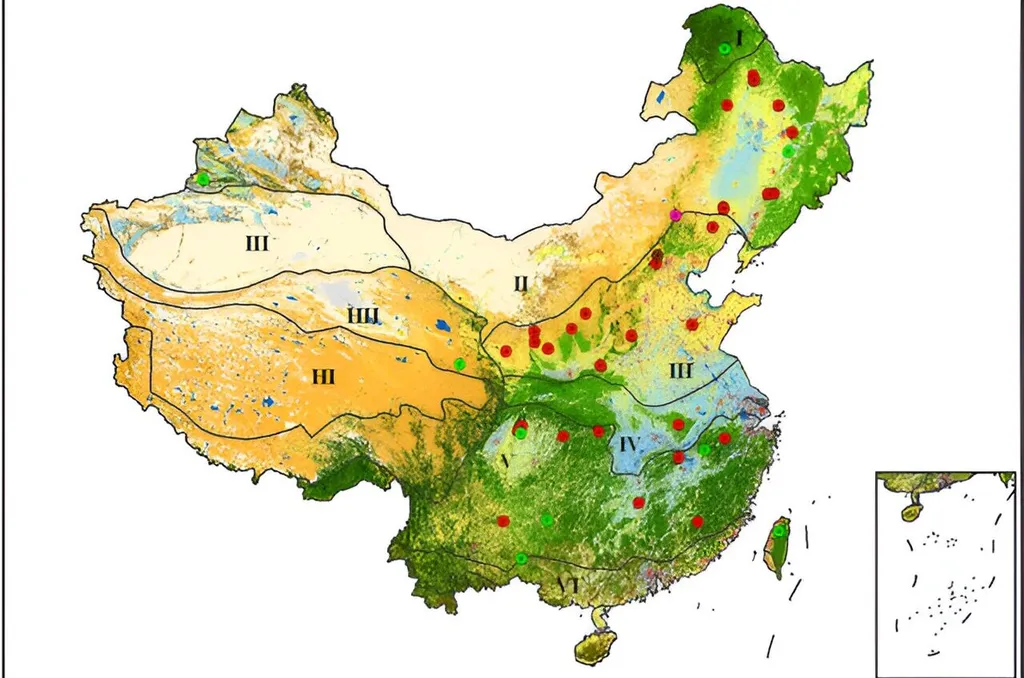In the heart of China’s Linhe region, a groundbreaking study led by Yanan Liu from the School of Geomatics and Urban Spatial Informatics at Beijing University of Civil Engineering and Architecture is revolutionizing the way we map crops. By harnessing the power of Sentinel-1 and Sentinel-2 imagery within the Google Earth Engine (GEE) platform, Liu and his team have developed a hierarchical feature optimization method that significantly enhances crop mapping accuracy. This method incorporates a newly developed vegetation index called the Kernel Normalized Difference Vegetation Index (kNDVI), which has proven to be a game-changer in the field of agricultural remote sensing.
The study, published in the journal *Remote Sensing* (translated from Chinese as “遥感”), focuses on the critical task of accurately identifying and mapping different crop types. This is not just an academic exercise; it has profound implications for agricultural management, food security, and ecosystem sustainability. As Liu explains, “Accurate crop mapping is vital for monitoring agricultural resources and making informed decisions. Our method strikes a balance between precision and computational efficiency, which is crucial for large-scale applications.”
The team’s approach involves calculating a comprehensive set of features from multi-source remote sensing imagery, including spectral, texture, polarization, vegetation index, and crop phenological features. Among these, the infrared band features and the newly developed kNDVI stand out for their effectiveness. “The kNDVI, in particular, has shown remarkable potential in enhancing the accuracy of crop type mapping,” Liu notes. “Its integration with other features has led to a significant improvement in our models’ performance.”
To identify the optimal subset of features, the researchers employed feature correlation analysis and random forest recursive feature elimination (RF-RFE). This hierarchical feature optimization method ensures that redundant features are minimized, leading to more efficient and accurate models. The resulting 10 m crop map, generated by the optimal model (Model 15) with 34 key features, demonstrated an overall accuracy of 90.10% across five crop types: corn, wheat, sunflower, soybean, and beet. This accuracy surpasses other representative feature optimization methods, such as Relief-F (87.50%) and CFS (89.60%).
The implications of this research extend beyond the agricultural sector. In the energy sector, accurate crop mapping can inform bioenergy production, helping to optimize the use of agricultural resources for energy generation. As the world shifts towards renewable energy sources, the ability to efficiently and accurately map crop types becomes increasingly important. This research paves the way for more sustainable and efficient agricultural practices, ultimately contributing to a more secure and sustainable food and energy future.
As we look to the future, the integration of advanced remote sensing technologies and machine learning algorithms holds immense promise. Liu’s work is a testament to the power of interdisciplinary research and its potential to drive innovation in the field of agritech. By continuing to refine and expand upon these methods, we can expect to see even greater advancements in crop mapping and agricultural management, benefiting not only farmers but also the broader energy and environmental sectors.

